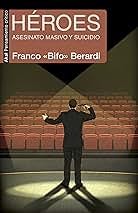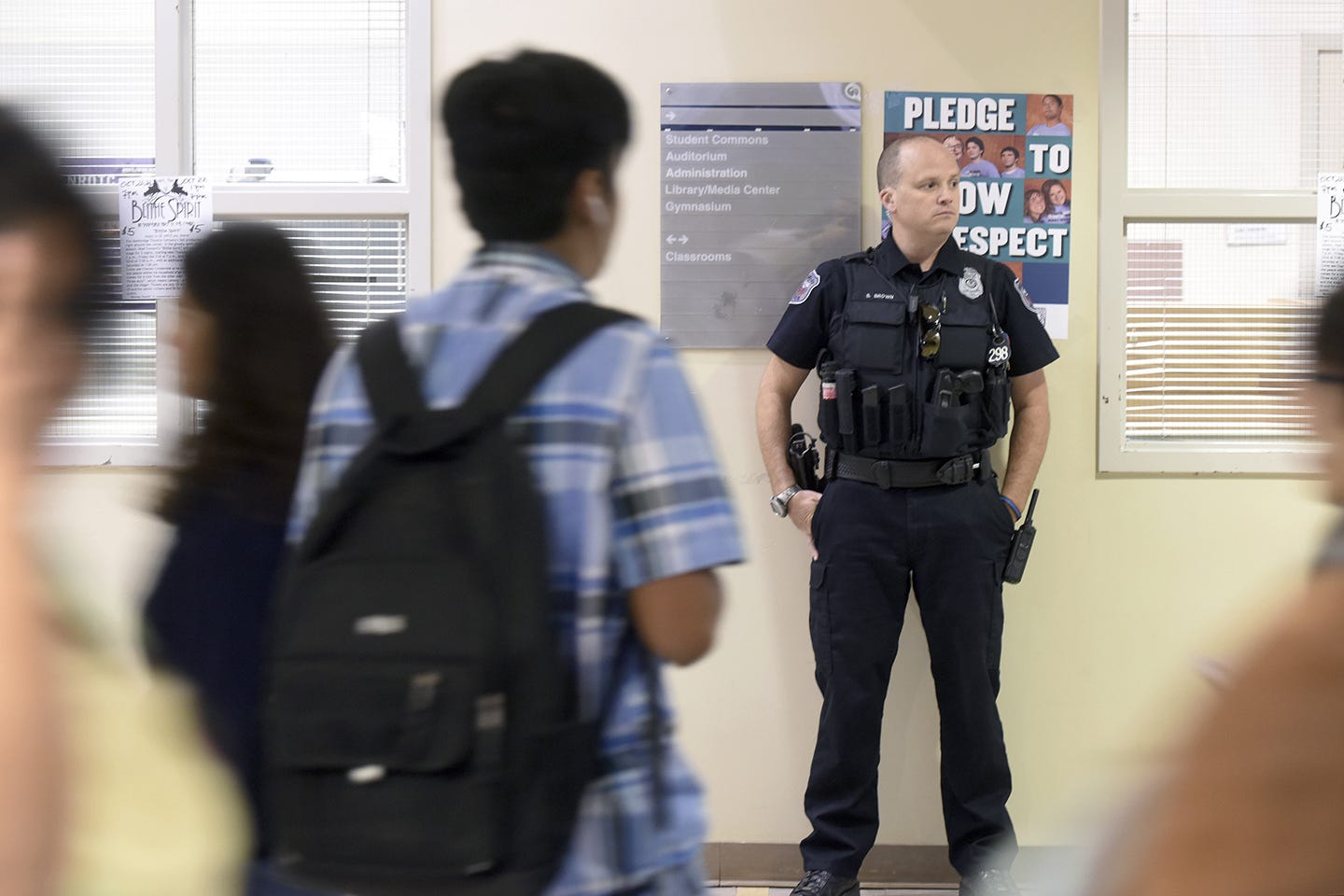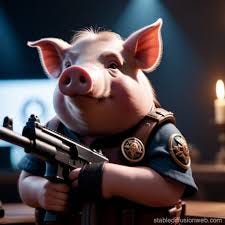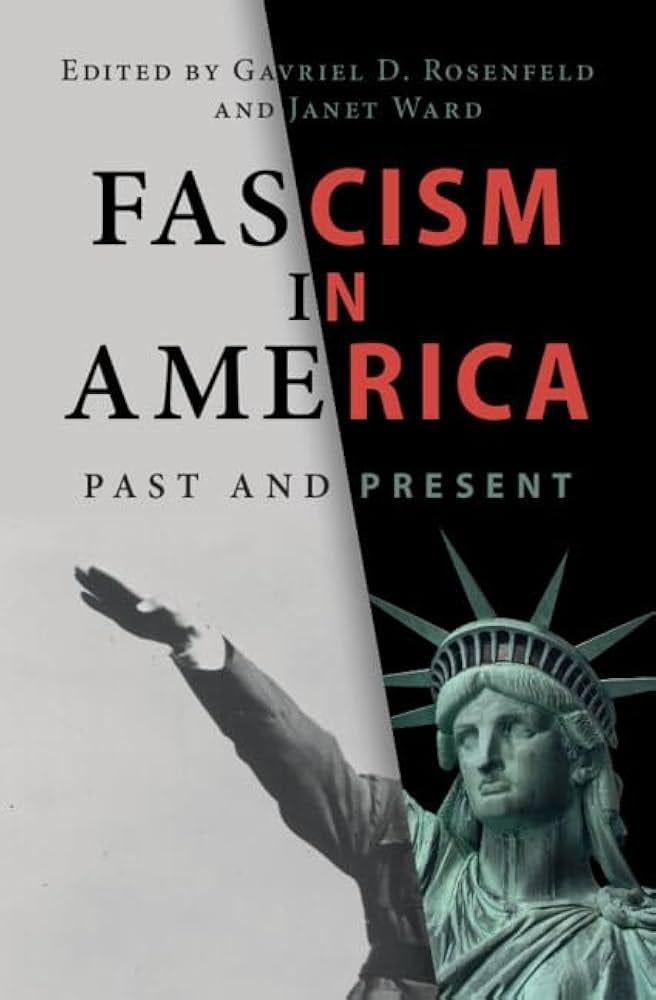MASS SHOOTER
“I hate the fucking world […] it’ll be like the LA riots, the oklahoma bombing, WWII, vietnam, duke and doom all mixed together. maybe we will even start a little rebellion or revolution to fuck things up as much as we can. i want to leave a lasting impression on the world.” [i]
-Eric Harris’s journal, The Book of God
Set Up: I’ll Show Them by destroying the world, including myself.
Clinical explanation: Mass Shooter was the seminal game of this text. A clinical version of the game is yet to be defined. However, group therapy offers a structured timeframe to enact aspects of the Mass Shooter game. For example, White will indiscriminately fire comments or questions to the group (Black); “How’s everybody doing?” or “Gee there’s tension in here,” due to underlying agitation.
The impersonal approach creates confusion in the group. White is often a hard Where’s Waldo? (waiting in plain sight) player, so the indiscriminate survey encourages group members to play Kick Me. The Where’s Waldo? player views the “Kick” as an act of war. The Kick or negative strokes resolve White’s anxiety regarding self-expression. They are relieved from the verbal shooting and they are no longer a candy-striped Waldo who doesn’t belong in the group. Psychologically, “Well, at least I said something in group tonight.”
Original game: Mass Shooter is predominantly derived from Eric Berne’s original Kick Me game. The War game version of Kick Me is played from a one-up (superior) rather than Berne’s White who is in a one-down, melancholic position (This Always Happens To Me). With Mass Shooter, White is a supremacist waging war on civilian targets. For example, White provokes the police (Black) to commit homicide (judicious murder) against them during the shooting. Therefore, Mass Shooter resides in the family of Kick Me games, which include the War game version, e.g., terror attack that provokes a bombing campaign in “self-defense.” For example, the October 7th Hamas attack was a provocation for Israel’s sadistic Operation Iron Sword.
In the way he dressed and his behaviors, Columbine killer Eric Harris provoked anger and distress in his friends, e.g., black trench coat. Eric quoted Hitler and discussed concentration camps as well as littering his high school papers “with swastikas.” On occasional, he would yell, “Sieg Heil” when he achieved a strike in bowling, i.e., begging to be Kicked. [i] Additionally, Mass Shooter contains an escalation process. Petty crimes are often committed prior to the final act.
The escalation follows the playbook of Eric Berne’s Cops & Robbers (C&R) game. The C&R gameplayer unconsciously gets busted by the authorities as opposed to the professional criminal who does not intentionally leave a calling card or get caught. As in war, death or incapacitation (prison) is White’s final solution. Evidence of this is that the Mass Shooter game does not include the Catch Me If You Can C&R version. Instead, there is no plan of escape: “a mass shooting is a unique form of suicide, an angry one, meant to cause as much harm as possible.” [i]
The killer in Mass Shooter seeks revenge and restoration via carnage to be immortalized. The attempt is to go viral online. The climax is a sadistic version of Berne’s self-righteous game Now I’ve Got You, You Son of a Bitch! As noted, the game ends when the killer dies by suicide (either by themselves or by cop), instead of being “busted.” Instead of discovered hanging or a private overdose of pills, White’s suicide is exhibitionistic: their revenge is meant to be viewed by an audience of millions. Therefore, Mass Shooter game ends with White committing murder and becoming incapacitated (suicide, suicide-by-cop, arrested, psych ward, prison, etc.).
Berne (1966) wrote that exhibitionistic suicides occur as “a desperate, pathetic, and often vengeful effort to get attention from a parent, living or dead.” The act is a “gruesome stroke of recognition,” whereby White hears (from their parent) in their head, “Well, you finally did something to attract my notice!” [ii] They are momentary heroes and “win” in the moment. The “win” (retribution) is based on a sense of omnipotent supremacy. After their agitation was discharged, Eric and Dylan completed the game by switching to the victim role: they each simultaneously killed themselves in the library of the public high school.
The climax of the event is equivocated with the sexual game that Berne (1964) titled Uproar. In this interpersonal game, two people are trying to avoid sexual feelings and intimacy. Often, sex and intimacy are confused (e.g., father and daughter; husband and wife). [iii] The Uproar game concludes with both parties separating and usually slamming their bedroom doors. Children in America play this game through physical combat, which is sanctioned through the entertainment industry, e.g., superhero movies and violent video games as well as social media videos.
Eric Harris and Dylan Klebold played the militaristic, first-person shooter, personal computer game Doom. They both had bound sexual energy manifesting as agitation. They wanted to get laid and be in love. However, they both had “give-up” and “get-nowhere-with” scripting in their history. The existential position that comes with this conditioning is a sense of futility. In the Mass Shooter game, the final act is a form of Uproar. In the original, one or both players slam their bedroom door. White is unable or unwilling to experience interpersonal intimacy, so they sequester themselves. Instead, they are angry: “I Can’t Stand It!”. Therefore, the final act (death) is a final solution for themselves. The aim for White is to become the “hero.”
In the book Heroes: Mass Murder and Suicide, Berardi (2015) writes about “spectacular murderous suicides.” As opposed to last century, mass murderers of the twenty-first century “are the extreme manifestation” of the trends of this era. He sees the mass murderers, e.g., mass shooters, “as the heroes of an age of nihilism and spectacular stupidity: the age of financial capitalism.” [iv] This era, unlike the end of the twentieth century, is marked by excessive stimulation (less bodily experience of suffering and pleasure), a lack of empathy (the inability to recognize feelings), and the desecration of sensibility (desensitized to the presence of the Other). [v] In reality, White is not a hero, but in the virtual world they are immortalized. In the final scene, they metaphorically stand on a digital stage (platform) without physical bodies in the audience.
The aim is vindication for their suffering: I’ll Show Them. White’s journals and suicide notes reveal their hidden depression and suicidality as well as rage (collected over years).
Thesis: In the book The Anatomy of Fascism, Robert Paxton notes how the “fascist impulse to unleash destructive violence, even to the point of self-destruction, sets it apart.” [vi] The thesis to Mass Shooter is unleashed destructive violence and self-annihilation. Mass Shooter is usually a three-handed—killer (persecutor), victims, Connection—third-degree War game. This implies violence (tissue damage), death, destruction, hospitalization, prison, etc.
On the societal level, Mass Shooter is a microcosm of a terroristic attack, e.g., an atomic bomb being dropped on a densely populated city (OMG). Psychologically, White has been suffering from despair without a relational body to rationally communicate with. White is rageful and revengeful while also feeling self-righteous. In the same manner as NIGYSOB!, Mass Shooter begins via the collection of real or perceived injustices. For example, manifestos are littered with racism and white supremacy references as well as commentary on “cultural Marxism” and the “feminization” of society.
The act is pre-meditated and meant to be documented, recorded, recombined, and shared online. White takes full advantage of search engines such as Google (Here To Help!) to examine the lives of previous mass shooters. In fact, the Columbine mass shooting has been the template for 20 school shootings in the last 20 years. Ironically, the Columbine massacre was a failed bombing as opposed to a “typical” twenty-first century mass shooting. The Columbine teenagers had over 100 bombs, including a car loaded with explosives that was meant to kill members of the press and first responders in a trilogy of violence (explosives in the school, a militarized crossfire as students fled the building, and then the finale: car bomb).
Therefore, White uses digital media to re-make the previous act. The Violence Project notes that many of these school mass shootings are simulations of the Columbine massacre:
School mass shooters tend to fit the mold of the Columbine shooters. They are either current or former students of the school, and, like the Columbine killers, they are young (fifteen and sixteen being the most common ages) white (76 percent) males (98 percent) with a disciplinary record or violent history who target suburban public high schools. [vii]
School officials are unknowingly playing a rescuer role in the aftermath of the Mass Shooter game. This role assuages their fear, sense of guilt, and helplessness amidst these tragedies. American schools along with governmental support and “private partnerships” as well as new policies are announcing to students and the wider community, We’re Only Trying To Help You! The message includes AI and Mental Health (see Media games) solutions to “school safety.” Additionally, schools are adding expensive updates such as secure entrances, more cameras, and school resource officers (SRO’s).
The SRO’s are armed law enforcement professionals. The abbreviation (“SRO”) sounds sweet and soothing as opposed to an armed prison guard. SRO differs from the anarchist’s abbreviation for cops: Personnel In-possession of Gun (PIG).
The schools also run “lockdown” or “safety” drills to ostensibly prepare the staff and students for an unwanted intruder. Meanwhile, the administrators are scripting the current students to believe schools are fundamentally unsafe: “Ain’t It Awful massing shootings?” The procedures and precautions are laid out for future Natural Born Killers who will know the drill. There is no scientific evidence—instead, evidence to the contrary—that these measures protect children. However, it allows school boards and superintendents to remain helpless and blameless as they do nothing meaningful to solve this problem. The false safety measures propagandize the public: surveillance, “lock downs”, social distancing, tracking, monitoring, etc., are equated with trust and security. The education system is playing See how-hard I’m Trying (S.I.T.) as they refit the institutions to resemble maximum-security prisons (see Notes On Fascism).
Aim: According to The Violence Project, the mass shooting is “a matter of restoration.” Even though the gunman (98% are male) pulls the trigger, they find themselves in the victim position:
…mass shooters very often see themselves as the victims; they feel some great injustice has been done to them […] stew in their anger. They never forget, never forgive, and never let go, nursing resentment over real or perceived injustices until, eventually, they strike back. [viii]
White starts in the one-down victim role: they feel despair, powerlessness, hopelessness, and are often suicidal. Fundamentally, their strategies for dealing with their problems are passive: they actively do nothing (inhibition of energy). As they acquire firearms and explosives they gain situational power, i.e., the one-up persecutor role. Because Mass Shooter is a three-handed game, White does not operate in isolation. The Connection role is played as the symbiotic rescuer to White’s victim role.
The Connection can be a friend, acquaintance, gun show vendor, or family member. The Connection provides the guns, ammunition, money, plans, bomb-making equipment, etc. to White who receives. In the mind of Black (rescuer), the Connection is providing a judgment-free service to White. Without the Connection there are no weapons and therefore White has no power or way out of the victim role. The guns and/or explosives that the Connection role gives to White put them in a one-up status (superiority): they enact the angry persecutor role to exact violent revenge. For Eric and Dylan, they had a list of students “who’d pissed them off” for making fun of them and specific females who rejected them. [ix]
However, with printable weapons and other technologies, the “Connection” role becomes machine learning rather than relational: an automated AI Connection. Consider the Columbine massacre as an example of the former Connection role: older friends and acquaintances put Eric Harris and Dylan Klebold in touch with a person to purchase a TEC-9,[x] while others helped with pipe bombs, napalm, and ammo. [xi]
In 2024, alleged would-be-assassin Thomas Matthew Crooks used a drone to surveil the Trump rally and Google searches (distance to the podium). Luigi Mangione allegedly murdered the UnitedHealthcare CEO (Brian Thompson) with the aid of a 3-D printed firearm. Because media is reversing back to television (videos, channels, podcasts) Mangione was likely playing World War I (WWI). This is the same as the twenty-first century Where’s Waldo? (WW) type 1 (i.e., WWI). World War I began with an assassination in a provincial capital (“Oh My God!”). Now, instead of Archduke Franz Ferdinand, the murder is of a ruthless capitalist for one of the largest and most profitable corporations on the planet (UnitedHealthcare).
The murder of CEO Brian Thompson in the “provincial” capital of the U.S. (New York City) caused a divisive national narrative. The result is digital warfare as opposed to physical battles (“Ain’t It Awful Healthcare?”). The alleged assassin, Luigi Mangione, may as well have had a candy-striped sweater. Like Crooks, they both he hid in plain (on a roof at a rally or at a McDonalds), i.e., Where’s Waldo? It is more likely that the NYPD and national security state (CIA, FBI, NSA, etc.)—in concert with the Media—are playing Let’s Pull A Fast One On Luigi (see FOOLS).
So, with OMG, White is also playing destructive and exhibitionistic versions of I’ll Show Them and They’ll Be Glad They Knew Me by inflicting damage on Them. [xii] The function of the WWI assassinations is meant to create moralistic outrage and terror (OMG). This suggests that as the medium of information and weapons technologies change (self-broadcast vs. television), the Mass Shooter game will as well, e.g., live-streamed terror attacks. If the stories are true, Mangione and Crooks operationalized a more intimate and discriminate form of violence, i.e., personalized targets. Psychologically, they both thought “I Can’t Stand It!” and in response, “I’ll Show Them!” The agitation in White and the ensuing violence (murder) and incapacitation (suicide, imprisonment) is understood as a game of I Can’t Stand It!
For example, white supremacist and neo-Nazi Dylan Roof chose to murder nine African Americans at Emanuel African Methodist Episcopal Church. Therefore, White may have a “target,” but the killings are not personal. The killings are indiscriminate, e.g., school children, patrons of a mall, churchgoers. To perform the exhibitionism, White does online research of other mass shooters and the anticipation of online virality are the drivers to deliver the fascistic terror attack:
…far-right race warriors have been enacting each other’s manifestos, traveling the common websites, envying the same violence, and imagining a shared white nationalist and racially purified future. [xiii]
Mass Shooter is driven by White’s need for others (Black) to regret how they treated White, e.g., bullying. For example, Eric Harris felt a sense of supremacy over others and plotted revenge. Eric Harris equated his uniqueness with superiority. [xiv]At an early stage of Cops & Robbers (C&R), Harris attacked his peers’ houses with BB guns “to retaliate for perceived slights, but most often for the offense of inferiority.” [xv] (NIGYSOB!). The collection of armaments gives White situational power to inflict the most damage: I’ll Show Them. Typical of a violent game, White is more interested in the effects the shooting has on their enemies (carnage) than they do in the rewards itself. [xvi]
The Media game version of Mass Shooter isolates White’s personality to piece together a “motive.” The use of detailed timelines via digital messages, social media posts and profiles evade the symbiotic nature of the event, i.e., White and the Connection role(s). The Mass Shooter game involves meticulous planning of the attack and not the getaway. White does not simply “snap.” For example, over the course of a week, Las Vegas mass shooter Stephen Paddock—who killed 60 people—systematically loaded 22 suitcases to an adjacent (second) hotel room he had rented for the massacre. [xvii] There was a distinct absence of escape planning (Paddock committed suicide). The violence inflicted on indiscriminate targets “are meant to be their final acts” [xviii] before rigor mortis.
Mass Shooter is a War game: White (person or nation) seeks retribution for a real or imagined sense of injustice, e.g., being bullied, fired from a job, broken up with, military occupation, etc. The act is a form of suicidal terrorism for notoriety and online virality. The current Mass Shooter game was preceded by Osama bin Laden’s I Can’t Stand It! game, whereby he also had a suicidal plot for attention on television. However, bin Laden played Influencer (see Capitalism games) and discriminate violence was a moral cause (see OMG).
Seen through this lens, the Hamas October 7th attack on Israel appears to be a Mass Shooter game. The attack by Hamas was homicidal and inherently suicidal. It also went “viral,” but the aim was not exhibitionistic notoriety. Rather, it was resistance against occupation (see Occupation game) with a discriminate aim to take hostages for leverage (an escape plan). The injustices and humiliation of the Palestinian people was real versus imagined. Therefore, the Israeli government’s response to October 7th (ethnic cleansing) is much closer to a Mass Shooter game (NIGYSOB!).
The Mass Shooter game is fascistic terrorism (sense of superiority) whereby the individual broadcasts themselves into immortality. Mass Shooter is restoration in the form of indiscriminate killing in contrast to the fascist final solution of the Nazi regime (discriminate killing). The moves in the game are like the ones the Unabomber (Ted Kaczynski) used in his twentieth century terror campaign. Thanks to Big Tech’s platforms, the difference between the twenty-first century Mass Shooter game and the Unabomber’s is that the Mass Shooter player self-broadcasts their violence.
The Mass Shooter game relies on the use of the social media industry to accelerate digital infamy via simulation, replication, and recombination. In contrast, Eric Harris saved handwritten journals (grandiosely titled “The Book of God”) and homemade VHS tapes (the Columbine boys made the “Basement Tapes” and other violent films). These analog mediums are now replaced with a trail of digital documentation that was already present. The “breaking news” is based on stored online information that is ready-made for instant sharing and fluid dissemination, e.g., digital profiles of the killer(s). Big Tech is Here To Help! (see Capitalism games) with this data circulation based on their relationships with U.S. intelligence agencies. The exhibitionism promoted by platform technology (instant celebrity or “hero”) has replaced the medium of newspapers and television for disseminating mass violence.
Timothy McVeigh and the Unabomber are listed as players in Original Mass-shooter Gangsters (OMG). Their acts of terror created a moral crisis (“Oh My God!”) whereas the Mass Shooter game escapes the news cycle in a matter of days, i.e., reinforces despair, impotence, and citizen apathy. The timeline for the Unabomber’s revenge game extended across decades. This was due to a reliance on television and newspapers, e.g., Ted Kaczynski’s manifesto Industrial Society and Its Future.
Mass Shooter and OMG differ in terms of the duration of the killings. The drama of the Mass Shooter game is (typically) over in a matter of minutes. The killer’s final move in Mass Shooter is suicide. The online virality is the shooter’s version of I’ll Show Them whereas the twentieth century serial killer eludes the authorities to continue committing crimes. So, OMG utilizes the original C&R version of Catch Me If You Can, whereas the Mass Shooter plays Kill Me If You Are Able.
ANALYSIS
Thesis: Feel my wrath before I die a hero.
Aim: Suicidal terrorism for notoriety and virality.
Antithesis: Discharge sexual energy (release bound energy/agitation without violence).
Roles: Victim, Persecutor
Dynamics: supremacy, revenge, self-righteousness.
Examples: (1) Public massacre (e.g., mall, place of worship, place of employment, concert). (2) School shooting.
Moves: (1) Victim to Persecutor (murder). (2) Persecutor to Victim (suicide).
Advantages: (1) Internal Psychological—discharge of agitation. (2) External psychological—avoids sexual frustrations/inadequacies. (3) Internal Social—NIGYSOB. (4) External Social—Nobody cares about me/I’ll Show Them. (5) Biological—suppression of sexual energy. (6) Existential—I am God.
[i] p. 266, Cullen, D. (2009). Columbine. Twelve: New York.
[i] p. 169 and 236, Cullen, D. (2009). Columbine. Twelve: New York.
[i] p. 16, Peterson, J. & Densley J. (2021): The violence project: How to stop a mass shooting epidemic. Abrams Press: New York
[ii] p. 271, Berne, E. (1966). Principles of Group Treatment. Oxford University Press: New York.
[iii] p. 131, Berne, E. (1964). Games people play: The psychology of human relationships. New York, NY: Grove Press, Inc.
[iv] p. 3, Berardi, F. (2015). Heroes: Mass murder and suicide. New York: Verso.
[v] p. 47 & 49, Berardi, F. (2015). Heroes: Mass murder and suicide. New York: Verso.
[vi] p. 169, Paxton, R. (2005). The anatomy of fascism. Vintage Books: New York.
[vii] p. 104, Peterson, J. & Densley J. (2021): The violence project: How to stop a mass shooting epidemic. Abrams Press: New York
[viii] p. 30-31, Peterson, J. & Densley J. (2021): The violence project: How to stop a mass shooting epidemic. Abrams Press: New York.
[ix] p. 327, Cullen, D. (2009). Columbine. Twelve: New York.
[x] p. 167, Cullen, D. (2009). Columbine. Twelve: New York.
[xi] p. 203, Cullen, D. (2009). Columbine. Twelve: New York.
[xii] p. 167, Berne, E. (1964). Games people play: The psychology of human relationships. New York, NY: Grove Press, Inc.
[xiii] p. 48, Editor, Rosenfield, G. D. & Editor, Ward, J. (Eds.). (2023). Fascism in America: Past and present. Cambridge University Press: New York.
[xiv] p. 175, Cullen, D. (2009). Columbine. Twelve: New York.
[xv] p. 161, Cullen, D. (2009). Columbine. Twelve: New York.
[xvi] p. 168, Berne, E. (1964). Games people play: The psychology of human relationships. New York, NY: Grove Press, Inc.
[xvii] Retrieved from https://en.wikipedia.org/wiki/2017_Las_Vegas_shooting on September 20, 2023. “With help from hotel bellmen, he brought five suitcases to his room on September 25, seven on the 26th, two on the 28th, six on the 30th, and two on October 1.”
[xviii] p. 16, Peterson, J. & Densley J. (2021): The violence project: How to stop a mass shooting epidemic. Abrams Press: New York.
NOTE
Eric Harris wrote a high school paper titled “The Nazi Culture.” Leading up to the Columbine attack, he read books such as The Nazi Party, Secrets of the SS, and The Ideological Origins of Nazi Imperialism. [i] Harris’s journals cite the Nazi’s final solution as part of his ambition: destroy the human race, i.e., extinction. [ii] Paxton (2005) notes how in the end, “fanatical fascists prefer to destroy everything in a final paroxysm, even in their own country, rather than admit defeat.” [iii] Eric wanted the world to be terrorized for his own self-aggrandizement and to ignite a worldwide revolution.
Eric and Dylan were in a symbiotic relationship, which allowed them to discount aspects of themselves in order to not think and not deal with their problems. They both felt terror and their last-ditch effort for their agitation was a passive strategy: violence (homicide) and incapacitation (suicide). Schiff and Schiff (1971) describe how exaggerated beliefs (grandiosity) maintain a symbiotic relationship. The teenagers had bound up energy that was discharged in the form of murderous violence and finally their own suicide (incapacitation):
Both incapacitation and violence are payoffs in the “I can’t stand it” game, thus grandiose. [iv]
In their agitated state, they were nihilistic, suicidal, homicidal, social Darwinian incels (involuntary celibates) without knowledge of the term “incels.” The Mass Shooter game is driven by passivity strategies whereby White will refuse to think and solve their problems related to sexual energy, which leads to increased agitation (bound energy) and violence. The demand and responsibility are left to their immediate environment [v] (e.g., Columbine school, students, the police) to deal with their agitation problems: “…before I leave this worthless place, I will kill whoever I deem unfit.” [vi]
[i] p. 265, Cullen, D. (2009). Columbine. Twelve: New York.
[ii] p. 258, Cullen, D. (2009). Columbine. Twelve: New York.
[iii] p. 171, Paxton, R. (2005). The anatomy of fascism. Vintage Books: New York.
[iv] p. 75, Schiff, A.W. & Schiff, J. L. (1971). Passivity. Transactional Analysis Journal. 1(1), 71-78.
[v] P. 105, Woollams, S. and Brown, M. (1976). TA: The total handbook of transactional analysis. Prentice Hall: New Jersey.
[vi] p. 261, Cullen, D. (2009). Columbine. Twelve: New York.


















